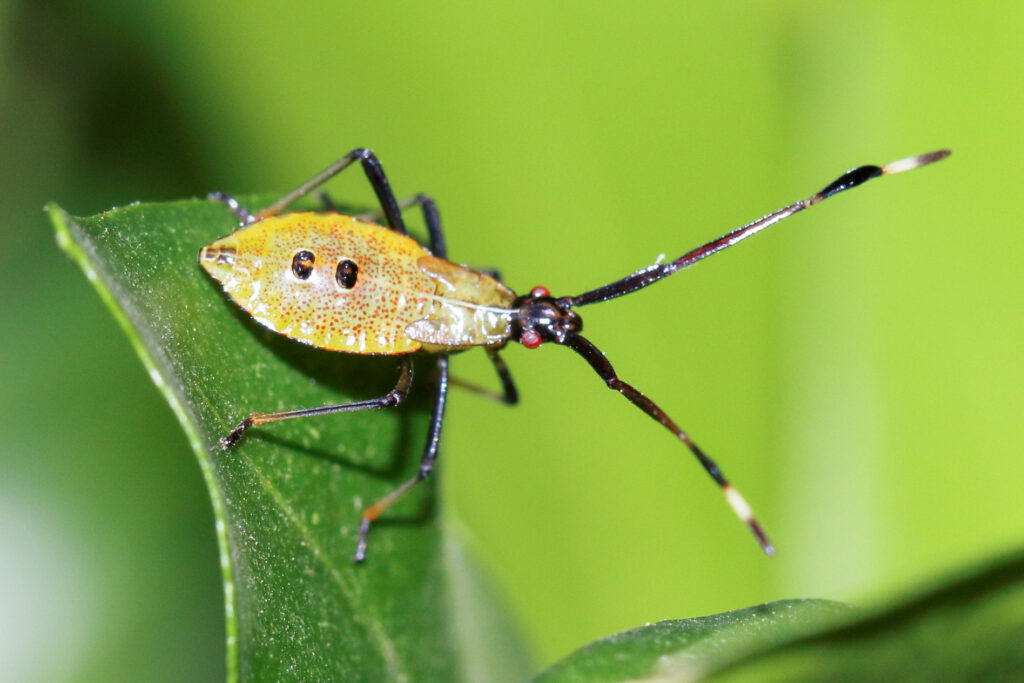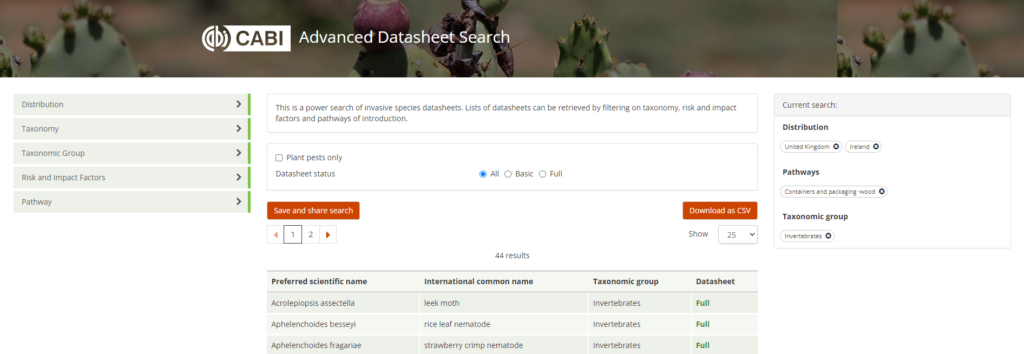
Are you interested in a list of invasive plants in Australia negatively affecting agriculture? Or a list of invasive insects in Hawaii that can be introduced via contaminated clothing? Maybe you want to know which vertebrate invasives cause ecosystem changes or habitat alteration…?
A dynamic new tool, the Advanced Datasheet Search (ADS) has been added to CABI’s Invasive Species Compendium (ISC). It can quickly and flexibly create lists of invasive species to help with problem solving, species prioritization and risk assessment.
The ISC contains over 2,400 full datasheets on invasive species, containing text and tables, that have been authored by experts, and almost 6,000 basic datasheets on invasive species that contain only tables. The ADS harnesses this wealth of structured data in the ISC, making it easy to explore and use in research, biosecurity, policy and decision making.
Faceted searches
The ADS currently uses a subset of the datasets in the ISC to enable you to construct faceted searches. These are taxonomy, distribution, risk and impact factors, and pathways.
Taxonomy can be explored at all levels from domain to genus. The lower levels automatically filter based on what has already been selected, allowing you to drill down to the taxonomic groups you are interested in. A separate list of broad taxonomic groups – such as plants, fungi, viruses, vertebrates and invertebrates – make it easy to select groups that are of common interest.
Distribution is organised by continent, and includes subnational regions for large countries to increase granularity.
Risk and impact factors are divided into four subcategories related to the invasive potential of the species, the impact outcomes from invasion, the mechanisms of these impacts, and the general likelihood of entry and control.
Pathways allow you to select the ways, both natural and human mediated, that the invasive species can spread between and within countries.
These search options are combined with intuitive Boolean operators. Selecting multiple options within a heading joins them with an ‘OR’ to expand the search and options between headings are joined with an ‘AND’ to narrow down the results. For example, the ADS can produce a list of invasive species that are invertebrates AND are present in the United Kingdom OR in Ireland AND can be spread by wood containers and packaging.
The results update dynamically as you construct your search, and can be downloaded or shared as a URL, promoting data sharing and collaboration.

This year, CABI has received funding from the United States Department of Agriculture – Animal and Plant Health Inspection Service (USDA-APHIS) to enhance the ADS and move from a beta version to the full launch.
Send us your feedback for a chance to win
CABI is looking for feedback from users of all backgrounds and fields, to help shape the future of the ADS.
Tell us what changes you would like to see, from improving the look and feel of the tool to adding more search options for even greater power and flexibility.
Please visit the ADS here, and provide your feedback by completing this survey.
A draw will be made from all survey contributors. The winner will receive a copy of Pest Risk Modelling and Mapping for Invasive Alien Species edited by Robert Venette.
Tell us about your most interesting search!
Further reading
CABI Working Paper: Assessment of the Use and Benefits of the Invasive Species Compendium
How does the Invasive Species Compendium help to manage the threat of invasive species?
Related News & Blogs
Biological control in action: Zambia’s field days on fighting fall armyworm
Experts from CABI recently held two field days and an expo in Zambia, showcasing innovative approaches to pest management to 584 farmers, agro-dealers and other stakeholders to help raise awareness of approaches to tackle the invasive fall armyworm (Sp…
11 June 2025




